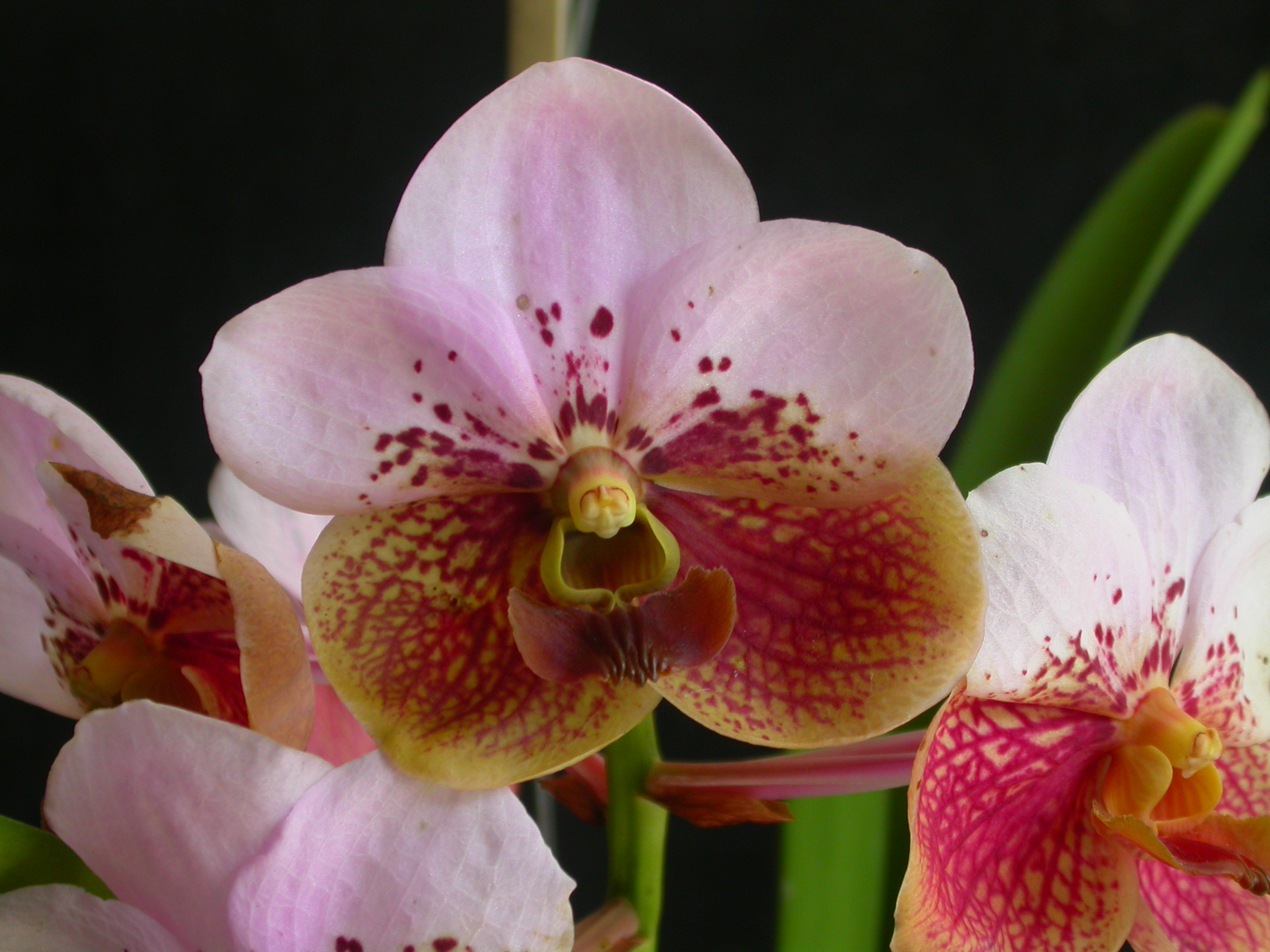|
Amesiella Monticola
''Amesiella monticola'' is a miniature species of epiphytic orchid native to the Philippines. The specific epithet "monticola" refers to the montaneous habitat of the species. Monticola is a combination of "mons" or "montis", meaning mountain and "cola" or "colere" meaning "inhabitant" or "dweller". Description These monopodial herbs form small, leathery leaves. The genus ''Amesiella'' forms white flowers with long spurs. The 1-6 very large flowers in relation to the vegetative parts of the plants are borne on short, axillary racemes. They have a characteristic long, twisted spur, indicating moth pollination. The flowers are purely white, devoid of any golden pigmentation of the labellum. This separates it from ''Amesiella philippinensis''. Taxonomy By some this species is treated as a mere variation of ''Amesiella philippinensis''. Hence, it is synonymous with ''Amesiella philippinensis var. monticola''. Conservation This species is critically endangered and its population i ... [...More Info...] [...Related Items...] OR: [Wikipedia] [Google] [Baidu] |
IUCN
The International Union for Conservation of Nature (IUCN; officially International Union for Conservation of Nature and Natural Resources) is an international organization working in the field of nature conservation and sustainable use of natural resources. It is involved in data gathering and analysis, research, field projects, advocacy, and education. IUCN's mission is to "influence, encourage and assist societies throughout the world to conserve nature and to ensure that any use of natural resources is equitable and ecologically sustainable". Over the past decades, IUCN has widened its focus beyond conservation ecology and now incorporates issues related to sustainable development in its projects. IUCN does not itself aim to mobilize the public in support of nature conservation. It tries to influence the actions of governments, business and other stakeholders by providing information and advice and through building partnerships. The organization is best known to the wider ... [...More Info...] [...Related Items...] OR: [Wikipedia] [Google] [Baidu] |
Amesiella
''Amesiella'' is a genus of orchids endemic to the Island of Luzon, in the Philippines. Taxonomy Previously it was believed that the species of this genus belonged to the genus ''Angraecum'' within the subtribe Angraecinae. The genus is named for Oakes Ames (1874-1950), founder of the orchid herbarium at Harvard University Harvard University is a private Ivy League research university in Cambridge, Massachusetts. Founded in 1636 as Harvard College and named for its first benefactor, the Puritan clergyman John Harvard, it is the oldest institution of higher le .... Description These short-stemmed, miniature epiphytes form elliptic, coriaceous, distichous leaves. White flowers with pronounces spurs, indicating moth pollination, are formed on short, axillary racemes. Genera Orchidacearum Volume 6: Epidendroideae (Part 3) Alec M. Pridgeon / Phillip J. Cribb / Mark W. Chase / Finn N. Rasmussen 2014 OUP Oxford ISBN 978-0-19-100389-9 Species As of May 2014, three spec ... [...More Info...] [...Related Items...] OR: [Wikipedia] [Google] [Baidu] |
Orchids Of The Philippines
There are about 141 genera of orchids representing about 1,100 orchid species, 900 of which are described as endemic to the Philippines. Many of them have showy, brightly colored and attractive flowers. ''Vanda sanderiana'' is unofficially dubbed the National Flower, as the only representative of the species is unique to the Philippines and is only found on the island of Mindanao. ''Abdominea'' *'' Abdominea minimiflora'' ''Acampe'' *'' Acampe rigida'' ''Acanthophippium'' *'' Acanthophippium mantinianum'' endemic to the Philippines *'' Acanthophippium sylhetense'' '' Acriopsis'' *'' Acriopsis indica'' *'' Acriopsis liliiflolia'' ''Aerides'' A genus with species that have showy flowers, and in the Philippines, characterized by the presence of fleshy looking spurs. The special feature of this flower is the fragrance some of the species of this genus has. *''Aerides augustiana'' endemic to the Philippines *'' Aerides inflexa'' *'' Aerides lawrenceae'' endemic to the Philippin ... [...More Info...] [...Related Items...] OR: [Wikipedia] [Google] [Baidu] |


